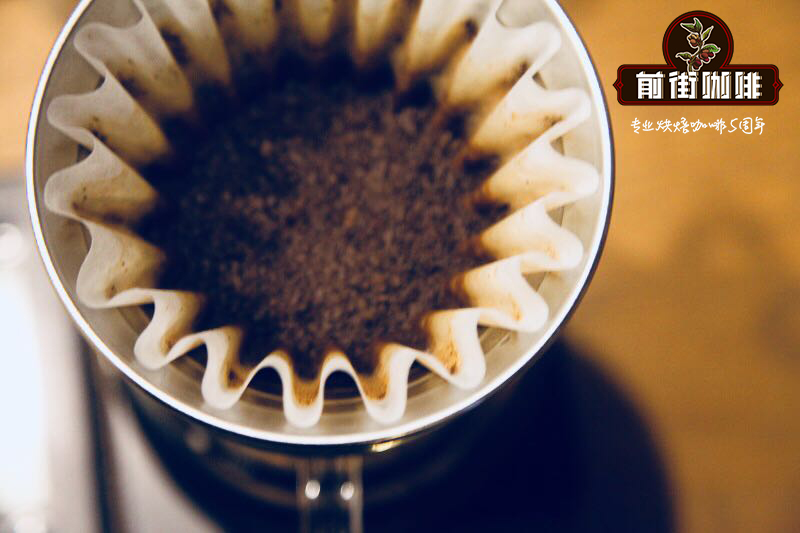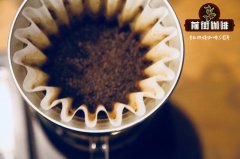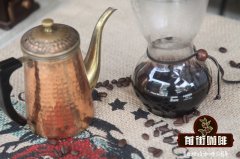Introduction to the cultivation of coffee beans in Ethiopia _ how to buy coffee beans in Ethiopia

Professional coffee knowledge exchange more coffee bean information please follow the coffee workshop (Wechat official account cafe_style)
Ethiopia is located between three and fourteen degrees north latitude, and the planting area of coffee trees is nearly 600000 hectares. There are two rainy seasons a year in the south and east of the country, while there is only one rainy season in the west. The distribution of the rainy season is different, so coffee is harvested in Ethiopia all the year round. Coffee grows at an altitude of between 550 and 2750 meters above sea level. The western and southern soils are volcanic rocks, mineral-rich soils are slightly acidic, and the average annual temperature is 15 Murray 25 degrees Celsius, making it an excellent environment for Arabica to grow.
In 2006, Ethiopia produced 300000 tons of coffee, still the largest Arabica producer in Africa and fifth in the world. Although the output is not among the best, the rich and diverse coffee cultivation system is unparalleled in the world.
● has four major coffee systems throughout the territory:
Forest coffee
Semi-forest coffee
Pastoral coffee
Farm coffee
Ethiopian coffee beans are cultivated organically without fertilization or medicine, but all of them have not been internationally certified.
● Forest Coffee (Forest Coffee)
Refers to wild coffee, which accounts for 10% of Ethiopia's national output and is distributed in the wild coffee forest areas of the west and southwest, also known as the Kafa forest. The dense trees here provide the most natural shade for coffee trees and do not need manual care. Mother Earth is in charge of birth, aging, sickness and death, and coffee farmers can go directly to the woodland to harvest.
● semi-forest coffee (semi--Forest Coffee)
Refers to semi-wild coffee, the same distribution ranking in Brazil. Vietnam. Colombia. Indonesia. Ethiopia。 India. Peru。 Mexico. Guatemala. In the western and southwestern Cafa forests, accounting for 35% of Ethiopia's coffee production.
In order to increase the yield, the farmers of the forest coffee system will each choose a small piece of wild woodland and artificially trim the branches and leaves that are too dense to balance shade and sunlight, assist coffee trees in photosynthesis and growth, and weed once a year to increase coffee production. In other words, the system uses a semi-natural and semi-artificial way to cultivate coffee trees.
● pastoral coffee (Garden coffee)
Farmers plant coffee trees in their backyards or fields and mix them with other crops. Although the density of coffee trees is the lowest, with only 1,800 trees per hectare, it is the most popular because the hybrid method best meets the livelihood needs of farmers and is currently the main mode of cultivation of coffee in Ethiopia. The small-scale farming system of pastoral coffee is mainly distributed in Sidamo and the southeast in the south. The coffee output of this system reaches 50% of Ethiopia and is getting more and more attention. The government is vigorously promoting the cultivation of pastoral coffee.
● Farm Coffee
This system adopts modern agronomic management, and there are regulations on fennel breeding, pruning, fertilization, spraying, planting density and so on. It is the only non-organic cultivation method at present, but it only accounts for 5% of the national annual output.
From the above four systems, it can be seen that, unlike the high-efficiency cultivation of enterprises and science and technology in Central and South America, most of Ethiopian coffee is mixed with wild and artificial varieties, so it is not easy to increase the yield. But Ethiopian agricultural experts are not discouraged and are already cultivating high-yield, high-quality Arabica mixed-race coffee trees, hoping to narrow the yield gap with Central and South America.
● Ethiopian coffee beans are divided into five levels.
. The first and second stages are washed beans.
Washed beans Grade1 represents 3 defective beans per 300g of raw beans.
Grade2 stands for 12 defective beans per 300g.
Gradc1 grade water washed beans are very rare and are generally difficult to buy. At present, all the washed beans exported from Ethiopia are Grade2 grade.
The quality of sun-dried beans is in the order of Grade2.Grade3.Grade4 or Grade5. Although the defective beans in Grade4 are much less than those in Grade5, coffee farmers claim that in order to save tax on exports, they often reduce the quality of Grade4 to Grade5 in order to save money. This may just be a marketing tactic, but in fact the quality of Grade5 is not as good as that of Gradc4.
Ethiopian beans are easily recognizable. Most of the beans are small and pointed long beans, the so-called 'longberry', and often mixed with small oval-shaped short beans, the so-called' shortberry', looks uneven in size and uneven in appearance.
The commercial bulk beans of Grade4 or Grade5 are mostly mixed with hundreds of different crystal seeds in different producing areas, so the phenomenon of uneven phase of beans is the most obvious, and it is not easy to bake evenly.
● Ethiopia
Even the official Ethiopian research unit does not know exactly how many Arabica subspecies are here. The coffee cooperatives in this mountain are certainly different from those planted in another mountain, and even small farmers in the same region grow different varieties of coffee.
It has been estimated that there are at least 2000 varieties of Ethiopian coffee and even more than 4500 kinds of coffee. Compared with the fat posture of Bourbon 'SL28', the main variety to the south of Kenya, or Tibica in Central and South America and Asia, Ethiopian beans look a little malnourished. But "beans" can not be seen, Ethiopian coffee has the most citrus aroma in the world, whether it is instant coffee or freshly ground coffee, you can smell the aroma of orange or lemon when you extract it. The nose is characterized by strong floral, fruity, sour and sweet aromas, but the alcohol is slightly thicker or less dense. The biggest disadvantage is that it is easy to bake unevenly, especially sun-dried beans. Even the best Grade3 Harald sun-dried beans often show uneven color, which is the biggest defect of Ethiopian beans, but the good thing is that it does not affect its good flavor. For coffee fans, you don't have to worry about what the beans look like, it's the most important thing. The stability of Ethiopian water-washed beans is much better than that of sun-dried beans, whose flavor fluctuates greatly every year, so be sure to test it several times before buying in large quantities.
If you buy good sun-dried beans, their flavor is much deeper than water-washed beans, but if you buy improperly handled sun-dried beans, it will certainly make people speechless, which is the wish of many coffee fans.
● Ethiopian coffee bean brand recommendation
The Ethiopian coffee beans baked in Qianjie Coffee-washed Yegashifi G1 [Kochel] are fully guaranteed in terms of brand and quality. And more importantly, the performance-to-price ratio is extremely high, a pack of half a pound 227 grams, the price is only about 75 yuan. According to the calculation of 15 grams of powder per cup of hand-brewed coffee, 15 cups of coffee can be made in a bag, and each cup of coffee costs only about 5 yuan, which is very cost-effective for coffee shops to sell dozens of yuan a cup.
Qianjie coffee: Guangzhou bakery, the store is small but a variety of beans, you can find a variety of unknown beans, but also provide online store services. Https://shop104210103.taobao.com
Important Notice :
前街咖啡 FrontStreet Coffee has moved to new addredd:
FrontStreet Coffee Address: 315,Donghua East Road,GuangZhou
Tel:020 38364473
- Prev

Introduction to the cultivation of coffee beans in Ethiopia _ how to buy coffee beans in Ethiopia
Professional coffee knowledge exchange more coffee bean information please follow the coffee workshop (Wechat official account cafe_style) Ethiopia is located between 3 and 14 degrees north latitude, coffee planting area of nearly 600000 hectares. There are two rainy seasons a year in the south and east of the country, while there is only one rainy season in the west. The distribution of the rainy season is different, so coffee is harvested in Ethiopia all the year round. Coffee
- Next

Ethiopian Coffee Bean grading Standard-explanation of Ethiopian Coffee Bean Export auction process
Professional coffee knowledge exchange more coffee bean information Please follow the coffee workshop (Wechat official account cafe_style) the evaluation criteria of Ethiopian coffee beans were formulated with the assistance of the American Fine Coffee Association (SCAA) (why can't Ethiopia, as the home country of coffee, be independent? Yeah! Think about it)-Egypt fully implemented the central auction system in 2008.
Related
- Detailed explanation of Jadeite planting Land in Panamanian Jadeite Manor introduction to the grading system of Jadeite competitive bidding, Red bid, Green bid and Rose Summer
- Story of Coffee planting in Brenka region of Costa Rica Stonehenge Manor anaerobic heavy honey treatment of flavor mouth
- What's on the barrel of Blue Mountain Coffee beans?
- Can American coffee also pull flowers? How to use hot American style to pull out a good-looking pattern?
- Can you make a cold extract with coffee beans? What is the right proportion for cold-extracted coffee formula?
- Indonesian PWN Gold Mandrine Coffee Origin Features Flavor How to Chong? Mandolin coffee is American.
- A brief introduction to the flavor characteristics of Brazilian yellow bourbon coffee beans
- What is the effect of different water quality on the flavor of cold-extracted coffee? What kind of water is best for brewing coffee?
- Why do you think of Rose Summer whenever you mention Panamanian coffee?
- Introduction to the characteristics of authentic blue mountain coffee bean producing areas? What is the CIB Coffee Authority in Jamaica?

